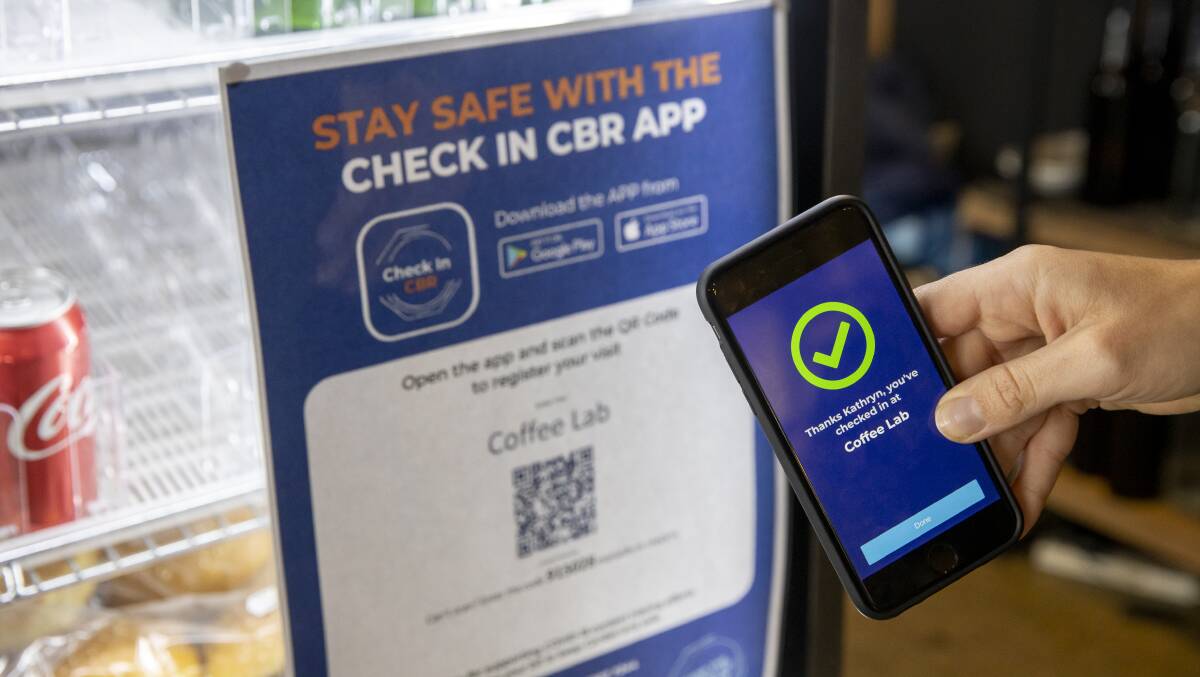The number of check-ins on the ACT government's contact tracing app has fallen by more than a third since the first weeks of December.
The sharp decline in use of the Check In CBR app, which remains mandatory in a range of public venues and shops, comes as the high COVID-19 case load means the tool is less useful for contact tracing.
However, the drop in use may also partly be explained by a decline in public movement as people chose to limit their activities at the peak of the Omicron wave.
There were 621,015 unique check-ins using the app in the week ending December 5, but in the week ending January 16 there were 396,256.
The number of check-ins has fallen steadily since the week ending December 12, when there were 626,747.
At the weekend immediately after the ACT's spring lockdown was lifted last year, there were 1.37 million check-ins in two days.

An ACT government spokesman said ACT Health was considering how the Check In CBR could continue to be a useful tool in the future.
"In the meantime people are still encouraged to use it to assist with their own tracking of movement which is helpful for if they become a confirmed case to notify those around them in their social and workplace settings," the spokesman said in a statement.
The Australian Health Protection Principal Committee, which is comprised of state and territory chief health officers and the Commonwealth chief medical officer, last year noted there was "limited utility of listing exposure locations at high case numbers due to the large number of locations".
The committee recommended governments review the use of QR code check-ins at lower-risk exposure locations because the sites mostly yielded a low number of secondary cases.
"The AHPPC recommends maintaining QR code check-ins at higher risk exposure locations as this allows rapid identification of high-risk transmission events and venues," a statement from the committee on December 30 said.
"The AHPPC also recommends ongoing use of QR code check-ins for locations where there is high risk of transmission to vulnerable individuals."
Health authorities in the ACT stopped listing the majority of exposure locations in December, and had indicated work was under way to automate the notification process for exposure sites within the Check In CBR app.
Checking in using the app remains mandatory under a health direction issued in November, with a maximum fine for non-compliance of $8000 for individuals.
The ACT government in November indicated it would consider winding back check-in requirements in line with NSW rules, but these changes were never made.
The mandated use of the app has slackened across Canberra in recent weeks, with less emphasis on ensuring all customers or visitors check-in to low-risk settings, such as supermarkets.
Health Minister Rachel Stephen-Smith has previously said the check-in app, which was developed locally, had been useful for quickly identifying contacts of cases at the start of the Delta outbreak in August.
A research paper from the Australian National University's centre for social research and methods in November showed women were likelier to check-in more frequently than men.
There were also socioeconomic, demographic, and geographic factors influencing QR code check in use.
"There is a very large difference in use of check-in apps based on trust in institutions and concerns for data privacy," the paper said.







